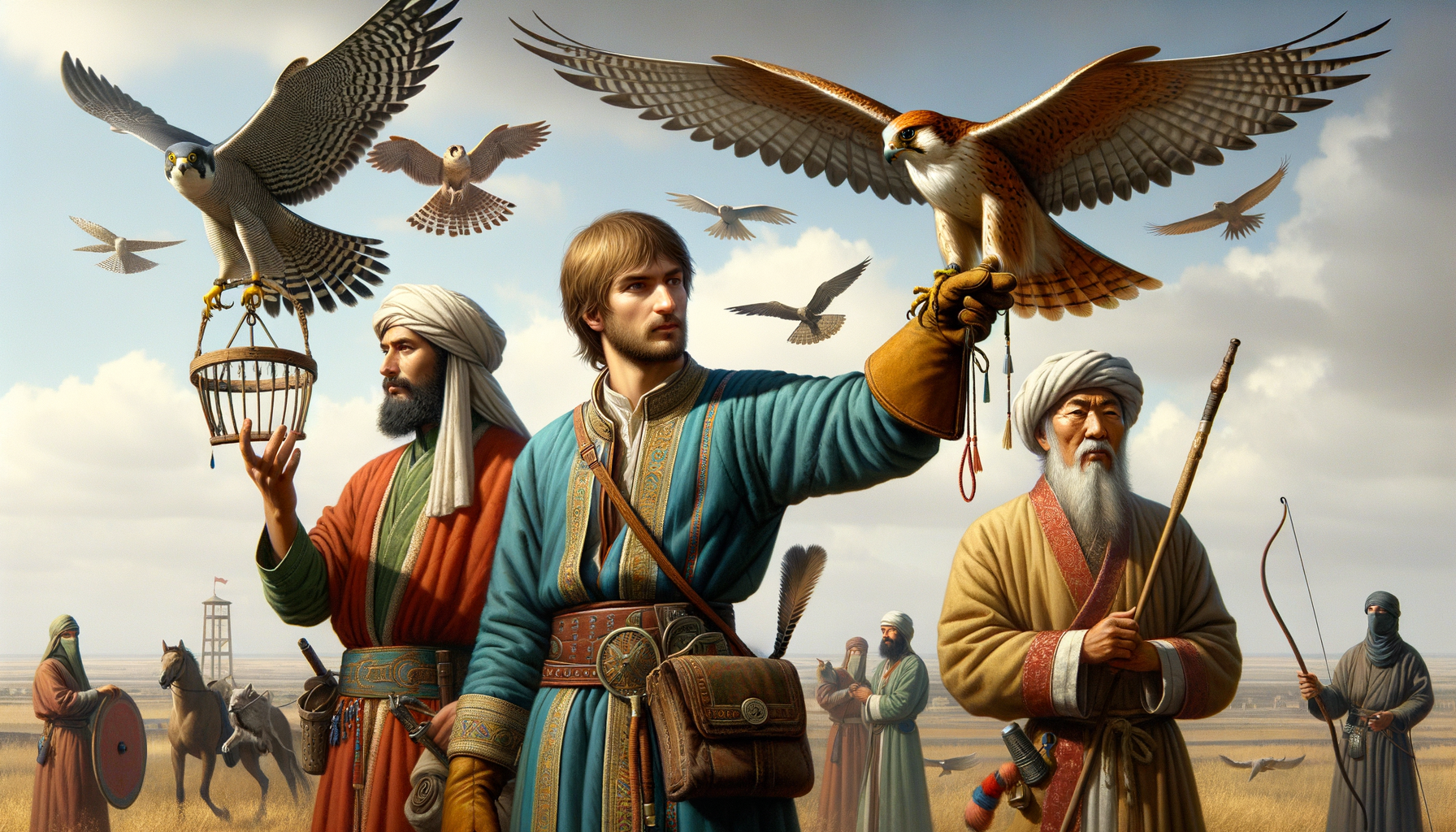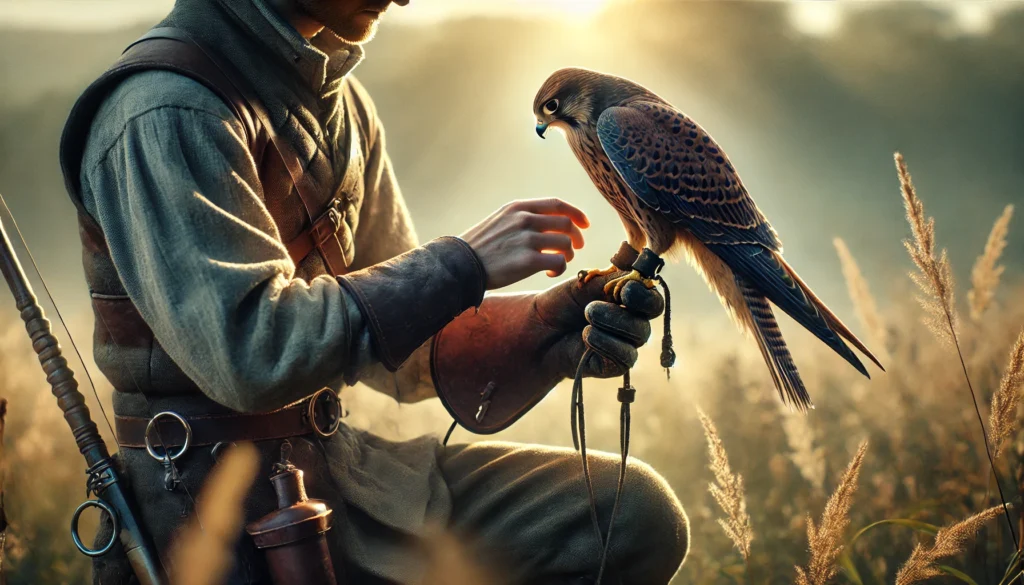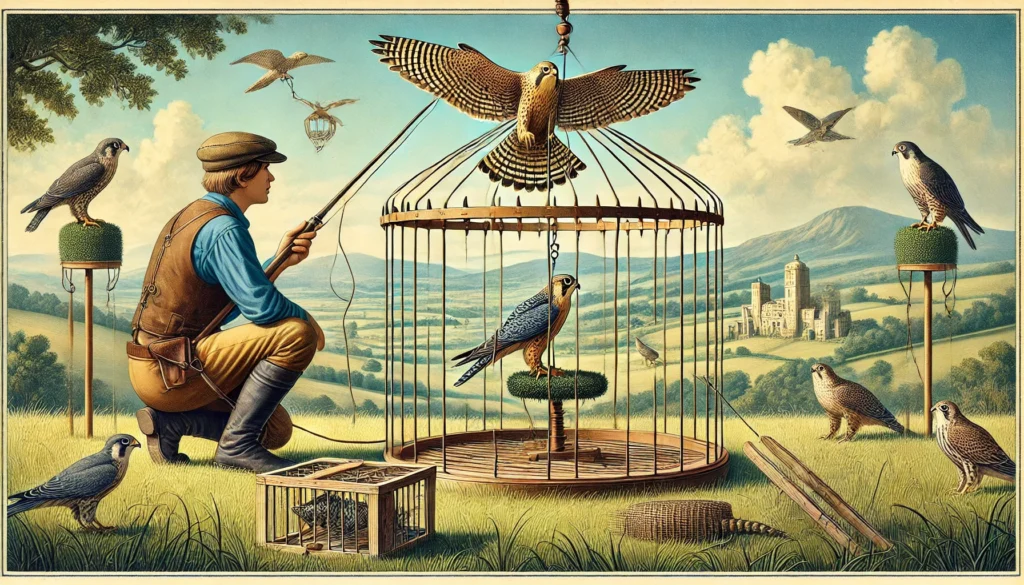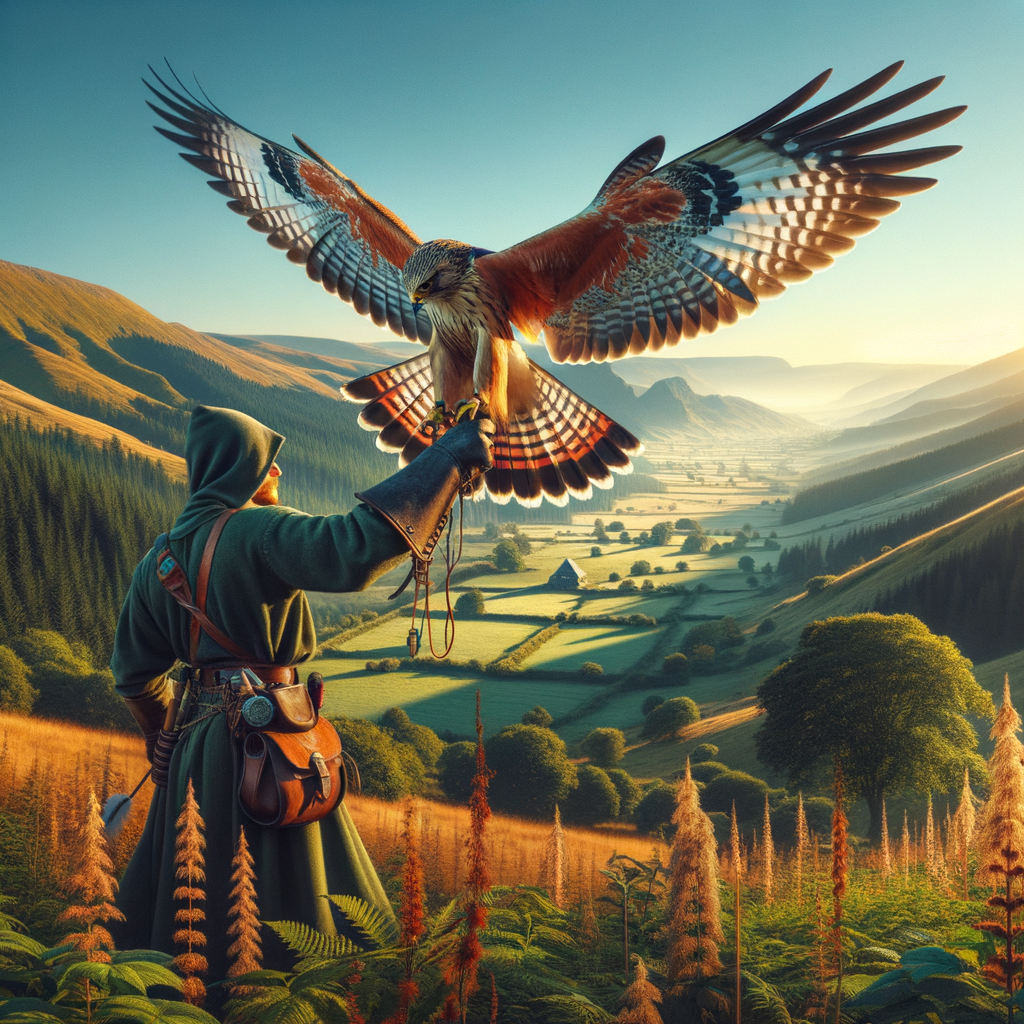Notable Falconers in History
- Frederick II: Known for writing “The Art of Falconry,” Frederick II was a Holy Roman Emperor who deeply admired falconry and contributed significantly to its literature and techniques.
- Mary Queen of Scots: An avid falconer herself, Mary Queen of Scots often engaged in the sport to unwind and escape the pressures of royal life.
- Genghis Khan: The famous Mongol leader appreciated the beauty and skill of falconry, often using it for hunting to ensure his empire’s warriors were well-fed and entertained.
- Kublai Khan: Genghis Khan’s grandson, Kublai Khan, had a vast collection of falcons and even employed many people to care for his birds, highlighting his passion for the sport.
- Emperor Akbar: Akbar, the Mughal Emperor, was a keen falconer and built an extensive aviary. His love for falconry was also a symbol of his empire’s grandeur.
- Charles Darwin: Although primarily known for his contributions to natural science, Charles Darwin also had a fascination with falconry, which influenced his studies and observations of animal behavior.
- Louis XIII of France: This French King was a dedicated falconer who viewed the sport as a noble pursuit, spending much of his leisure time training and flying falcons.
- Tamerlane: The Turco-Mongol conqueror and the founder of the Timurid Empire, Tamerlane, was another notable falconer who used the sport for recreation and sustenance.
Learn Falconry celebrates these historical figures and their contributions to the rich tradition of falconry. Join us in keeping this majestic sport alive!
Discover the Legends: Famous Historical Falconers
Imagine strolling through the rolling green hills of Ireland, where nature’s beauty captures your heart. Now, replace that hillside with the vast, ageless landscapes others have traversed with magnificent birds of prey soaring above. At Learn Falconry, we invite you to embark on an enchanting journey exploring the fascinating lives of famous historical falconers.
Falconry, an ancient practice dating back thousands of years, is more than just training birds to hunt. It’s an art form steeped in tradition and woven into the fabric of human history. Like the resilient shamrock that thrives in the emerald fields of Ireland, these legendary figures stood the test of time, leaving an indelible mark on the world.
In this article, you’ll discover the captivating stories of historical icons who dedicated their lives to mastering the bond between human and hawk. From royalty to adventurers, each falconer brings a unique flair to the tapestry of falconry. Their tales are nothing short of inspiring, shedding light on human perseverance, passion, and ingenuity.
Stay with us as we uncover these extraordinary lives. Just as you wouldn’t walk away from an Irish tale of heroism and magic, you won’t want to miss the incredible chronicles of these legendary falconers. Your adventure into the annals of falconry history begins here!
Notable Historical Falconers: Detailed Insights
Falconry, the ancient practice of training birds of prey for hunting, has a rich history spanning across the globe. Some individuals have become particularly famous in the realm of falconry. Here, we delve into the lives and contributions of historical falconers, notable falconers, and famous falconers who have left an indelible mark on this fascinating tradition.
Genghis Khan: The Mongol Falconer
Genghis Khan, the founder of the Mongol Empire, is one of the most notable falconers in history. He was known for his love of falconry and utilized falcons both for hunting and as symbols of his power. His birds were often part of grand hunting expeditions, showcasing the prowess and leadership skills of the Mongol ruler.
Further Reading
Emperor Frederick II of Hohenstaufen: The Scholar Falconer
Emperor Frederick II, the Holy Roman Emperor, is another famous historical falconer remembered for his scholarly contributions to falconry. His book, “De Arte Venandi cum Avibus” (The Art of Hunting with Birds), is one of the most important historical texts on falconry, covering various techniques and species of falcons.
Learn More
Mary of Burgundy: The Renaissance Falconer
Mary of Burgundy, also known as Mary the Rich, was a significant female falconer during the Renaissance. She was known for her passion for falcons and often depicted in art with her birds. Her involvement in falconry was not only a leisure activity but also an indicator of her nobility and power.
Related Articles
Kublai Khan: The Grand Master of Falconry
Kublai Khan, the grandson of Genghis Khan, was also a notable falconer. Marco Polo described his vast retinue of falconers in “The Travels of Marco Polo,” showcasing Kublai Khan’s enthusiasm for the sport and his grand hunting expeditions that included hundreds of falcons.
Dive Deeper
King Edward III of England: The Royal Falconer
King Edward III is remembered as one of history’s famous falconers. He was passionate about falconry and even established laws to protect birds of prey. The royal courts often showcased falconry displays, making it clear that King Edward III held falconry in high regard.
Additional Information
These examples highlight how historical falconers have significantly influenced the art and tradition of falconry across different cultures and eras. From Genghis Khan’s strategic use of falcons in the Mongol Empire to the scholarly works of Frederick II, the contributions of these famous falconers have enriched the practice and ensured its preservation through the ages. For those inspired by their stories, learning more about the techniques and equipment they used can be a fascinating journey into the past.
Explore comprehensive histories, techniques, and resources on Learn Falconry to deepen your understanding of this ancient tradition.
Exploring Historical Falconry
Falconry is an ancient sport with deep roots in history, and it remains a cherished tradition to this day. Let’s dive into the fascinating world of historical falconry and some notable aspects related to it.
Falconry for Hunting
Falconry was historically utilized for hunting, a practice that continues today in various parts of the world.
Falconry Regulations in Montana
- Quota and Demand: In Montana, the demand for wild peregrine falcons for falconry is historically low. The Montana Fish, Wildlife and Parks Commission often sets quotas that are below the actual demand to ensure sustainable practices.
Falconry Practices
- Support for Regulations: Falconers in Montana often support the current regulations, highlighting the healthy state of the peregrine falcon population due to these rules.
Conservation and Population Monitoring
Falconry also plays a vital role in conservation efforts and in monitoring bird populations.
Peregrine Falcon Population in Montana
- Population Growth: The peregrine falcon population in Montana is thriving. There has been a 50% increase in active territories since 2012.
- Fledging Rates: The average fledging rate is 2.2 young per pair in 2020 and 2.3 young per pair in 2021.
| Year | Fledging Rate (Young per Pair) |
|---|---|
| 2020 | 2.2 |
| 2021 | 2.3 |
Monitoring Efforts in Virginia
- Banding and Data Collection: The Virginia Department of Wildlife Resources bands peregrine falcon chicks and collects crucial data, such as wing lengths, weights, and sex, to track their development and overall health.
Table of Falconry Regulations and Permit Details (2024)
| State | Regulations | Application Period | Number of Permits |
|---|---|---|---|
| Montana | 10 nestling or fledged peregrine falcons | February 1 – March 31, 2024 | Historically low demand |
| Utah | 17 falconry take permits (16 for residents, 1 for non-residents) | February 1 – March 31, 2024 | Increased demand |
| New York | Licensed falconry hunting small game | Registration by April 10, 2024 | Ongoing |
| Oregon | Regulated falconry and raptor training | Ongoing | Ongoing |
Falconry as a Cultural Practice
Falconry is recognized by UNESCO as a living human heritage, signifying its cultural importance and the role it plays in various societies.
Historical Tidbits
- Ancient Beginnings: Falconry dates back to ancient civilizations, including the Hittites around the 13th century BCE.
- Medieval Europe: It flourished in medieval Europe, notably among the privileged classes. However, it saw a decline in the 17th century due to technological advancements such as shotguns.
- Modern Resurgence: Despite its decline, falconry was kept alive by dedicated enthusiasts and hawking clubs.
Modern Falconry Practice
- Conservation Tool: Modern falconry helps in conserving raptor populations. It involves capturing and training birds to aid in their population growth.
- Becoming a Falconer: To become a licensed falconer, applicants must pass a wildlife department test and work under a sponsor’s supervision for two to three years before advancing levels.
Falconry in the United States
The North American Falconers Association represents falconers across the U.S., working with various state-specific regulations and requirements.
| Step to Become a Licensed Falconer | Requirements |
|---|---|
| Apply through State Wildlife Department | Pass a 100-question test |
| Apprentice Phase | Supervised practice with a sponsor for 2-3 years |
| General/Master Falconer | Apply for a higher level after apprenticeship |
Falconry represents a unique blend of tradition, sport, and conservation, making it a dynamic and vital part of our natural heritage.
(No Conclusion – stick to Introduction)
Reflections on the Legacy of Falconry
The journey through the history of falconry unveils a rich tapestry of tradition and conservation efforts. From its origins in ancient civilizations and flourishing in medieval Europe, falconry has transformed into both a sport and a vital conservation tool. Today, regulations and monitoring efforts in states like Montana and Virginia ensure the health and growth of the Peregrine Falcon population. The craft requires dedication, with aspiring falconers undergoing rigorous training and supervision to master the art.
In 2024, falconry remains a celebration of human heritage, bridging the past and the present through its sustainable practices and deep cultural roots. By understanding and appreciating the legacy of famous historical falconers, we honor their contributions and continue to support the thriving world of falconry. Let this be an invitation to all to explore and cherish this fascinating blend of history, wildlife conservation, and timeless human connection.



